Fish of the Andaman Sea
- ExpeditionThailand

- Jul 11, 2019
- 4 min read
The Andaman Sea is widely known for being a hotbed for marine biodiversity and is home to close to 1400 species of fish alone, coming in all shapes, sizes and behaviours! In this blog post we present to you a list of some of the types of fish you would typically see whilst diving off the coast of Phuket!
Butterflyfish - Chaetodontidae
Named after their brightly coloured patterns and colouration, most butterflyfish fish typically grow to about six inches long and are diurnal (active during the day and resting at night). Many species of butterfly fish feed on hard corals. While many butterflyfish species are monogamous and can be found in close pairs, other species can gather in aggregations of hundreds of individuals. Some common species include Melon Butterflyfish (Chaetodon trifasciatus), Redtail Butterflyfish (Chaetodon collare) and Threadfin Butterflyfish (Chaetodon auriga) (Pictured below).
Goatfish - Mullidae
Goatfish are mostly well known for their two front appendages called 'barbels' below their mouths, of which they can independently move and use them to feel through sand and sediment on the sea floor in search of small invertebrate life to feed on. Common species of goatfish include Freckled goatfish (Upeneus tragula) and Goldsaddle goatfish (Parupeneus cyclostomus).
Barracuda - Sphyraenidae
There are currently 20 known species of Barracuda and most are found in tropical waters around the world. These torpedo shaped fish are capable of reaching up to 40 kilometres per hour and are mostly active by night, hunting small fish such as snappers. They can be seen in large shoals or as lone predators drifting through the sea. While most barracuda grow no longer than a metre in length, some Great Barracuda have been known to reach of up to 1.7 metres long and weighed more than 46 kilograms. They are known to live up to the ages of 10-15 years in the wild. Some common species of barracuda seen in the Andaman Sea include Obtuse Barracuda (Sphyraena obtusata) [left], Chevron Barracuda (Sphyraena qenie) [right] and the Great Barracuda (Sphyraena barracuda) [bottom].
Parrotfish (Scaridae)
Distinctly known for their bright colours and prominent beaks, parrotfish are among the most fascinating groups of fish found in the Andaman sea. Herbivorous fish that feed on the algae of corals, parrotfish are also able to change sex from female to male if the dominant male of the group is not present. Another unique feature of parrotfish is that some species will build themselves mucous cocoons from which they will use to hide their scent from predators at night. There are more than 90 species of parrotfish, sizing between 1-4 feet in length. Commonly spotted species include Bicolour parrotfish (Cetoscarus bicolor) and Blue barred parrotfish (Scarus ghobban)
Groupers (Serranidae)
Groupers are a large family of fish that can be found in sub-tropical waters across the world. They come in many varieties, with some weighing up to 100 kilograms. These predatory fish use their large wide mouths to suck their prey in with the help of their gills to swallow prey whole. Most groupers are hermaphrodites, with all juveniles being males up until the end of adolescence after around 3 years. Common species of grouper to find in Thai waters include the Peacock grouper (Cephalopholis argus), Malabar grouper (Epinephelus malabaricus) and the Honeycomb grouper (Epinephelus merra).
Snappers (Lutjanidae)
This family of carnivorous fish is commonly found across most tropical waters and is distinct for its spiny fins and sharp teeth. They feed mainly on smaller fish and have been known to live at depths of up to 450 metres below the surface of the sea. They can be found swimming on their own or in vast schools. Common species of snappers found in the Andaman sea include Bluestripe snappers (Lutjanus carponotatus), Mangrove Red Snappers (Lutjanus argentimaculatus) and Spanish Flag snappers (Lutjanus carponotatus).
Triggerfish (Balisitidae)
Triggerfish are a commonly seen within the tropical reefs of the Andaman sea, and are most well known for their human like teeth and and aggressive behaviour. Their aggressive behaviour is due to their highly territorial nature and they have been known to attack divers and snorkelers who stray too close to their nests. Triggerfish tend to grow quite large, such as the Titan Triggerfish (Balistoides viridescens), which can grow up to 0.75 metres in length. Other common species of triggerfish found in the Andaman Sea include the Indian Triggerfish (Melichthys indicus) and the Clown Triggerfish (Balistoides conspicillum).
Boxfish and Pufferfish (Ostraciidae)
Boxfish are the first group of fish from the family, getting their name from their cube shaped bodies. They are often a divers favourite with their bright colours and spots, and feed mainly on algae, sea sponges and small crustaceans. Their looks are deceiving however, as they are capable of releasing harmful toxins when they are threatened by predators. Common members of this group include Yellow Boxfish (Ostracion cubicus) and Spotted Boxfish (Ostracion meleagris).
Pufferfish are similar to boxfish except they tend to grow much larger and so lack the box shape that in distinct to their smaller relatives, with some reaching rather large sizers such as the Starry Pufferfish (Arothron stellatus) which can grow to up to a metre in length. Another member of this group is the Blackspotted Pufferfish (Arothron nigropunctatus).
Angelfish (Pomacanthidae)
Like the Butterflyfish, Angelfish are known for their bright colours and patterns. They are omnivorous and can be found foraging the coral reefs for sea sponges, crustaceans and algae. Their bright colours and patterns allow them to blend in with the corals and also to communicate with other Angelfish. Common species of this group include Bluering Angelfish (Pomacanthus annularis), Sixbar Angelfish (Pomacanthus sexstriatus) and the Emperor Angelfish (Pomacanthus imperator).
Scorpionfish and Lionfish (Scorpaenidae)
Containing some of the most venomous species of fish in the world, scorpaenidae is home to a vast array of fascinating species. Some such as the stonefish (Synanceia verrucosa) and bearded scorpionfish (Scorpaenopsis barbatus), predate by disguising themselves with the coral reefs lying in wait for prey while others such as lionfish of the genus Pterois act as ambush predators blowing jets of water at their prey to disorientate them. Like the Groupers, lionfish and scorpionfish swallow their prey by sucking them into their gaping mouths.





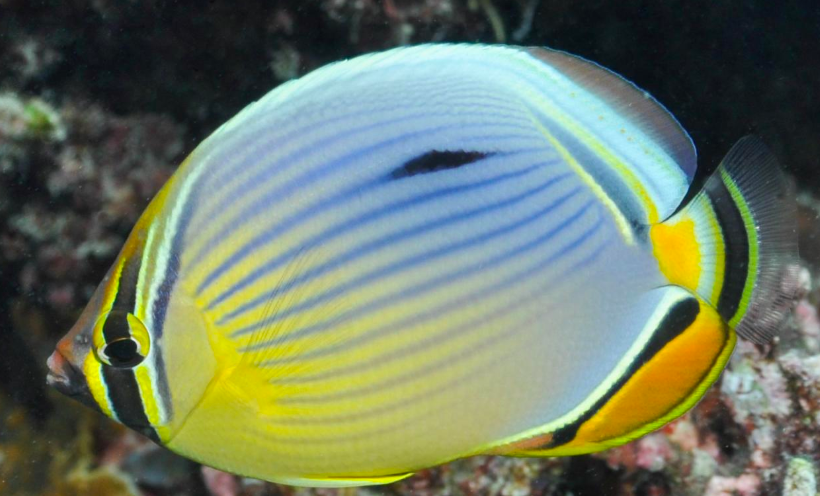

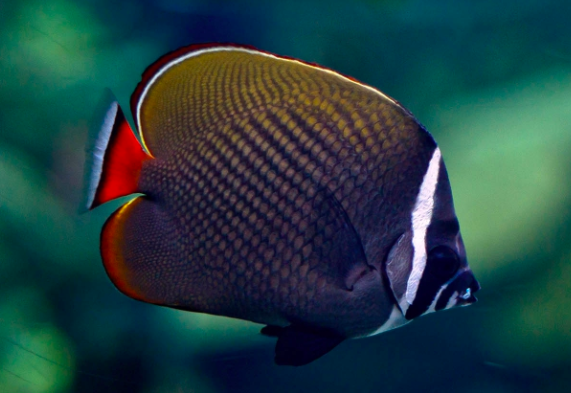

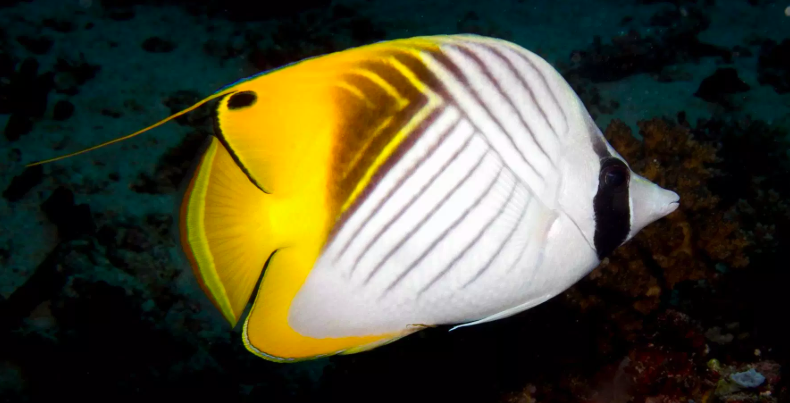





















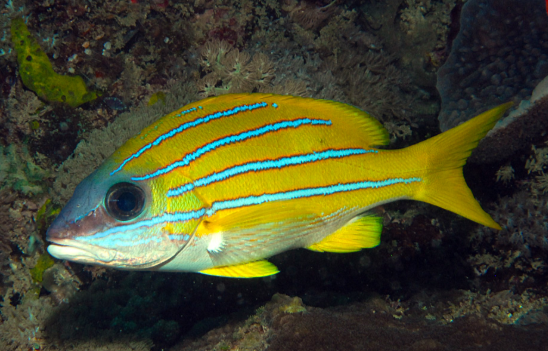






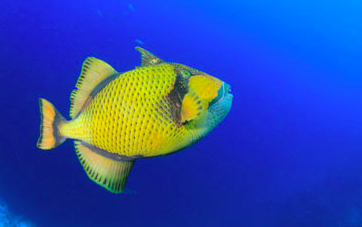





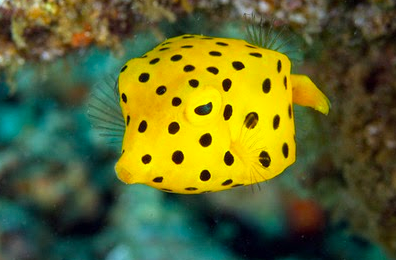
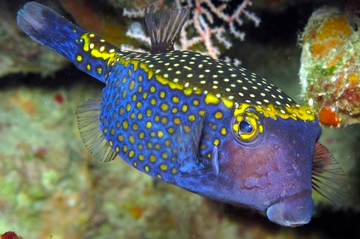



















Comments